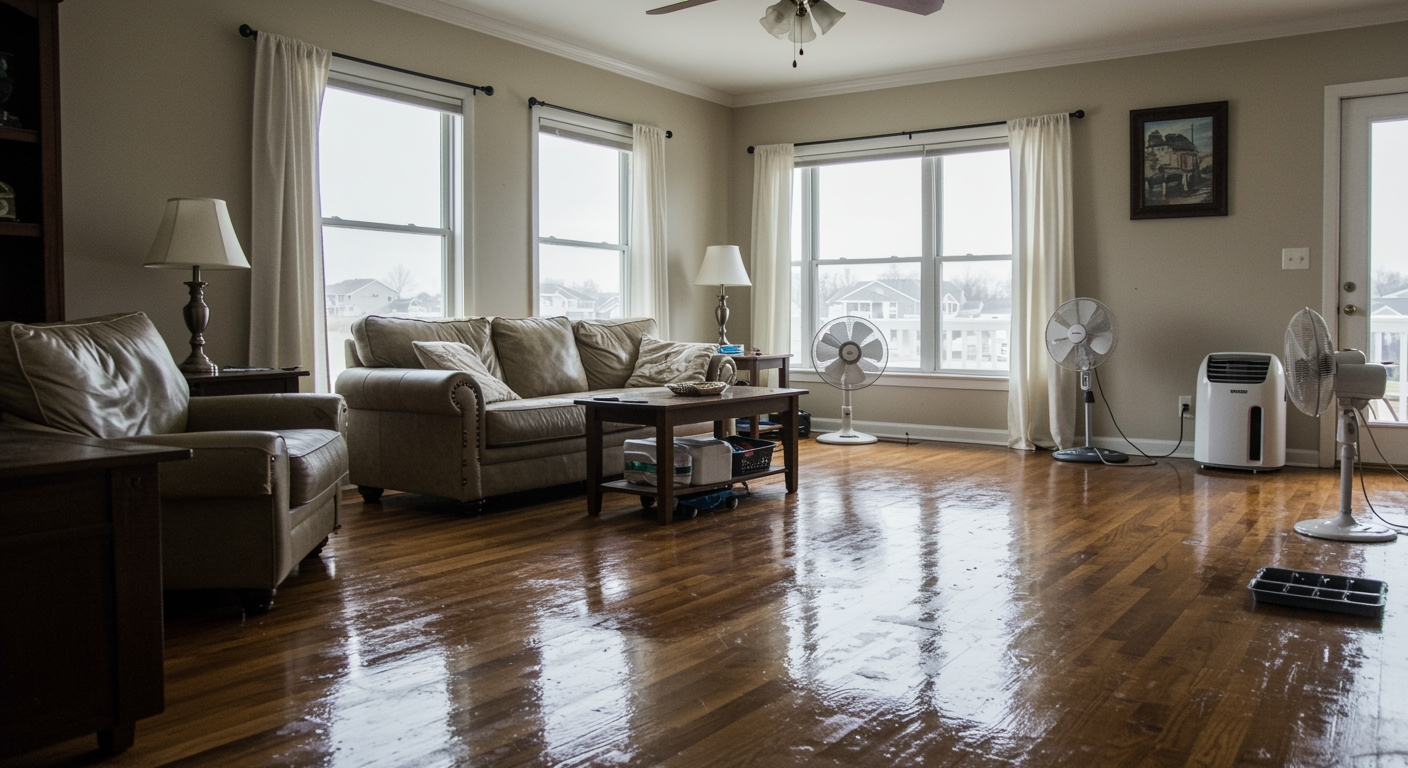What Are the Most Common Causes of Water Damage in Absecon?
Water damage in Absecon can result from both natural and internal sources. Identifying the root cause is the first step toward recovery.
- Heavy rainfall or coastal storms
- Burst pipes and plumbing failures
- Overflowing toilets, tubs, or sinks
- Broken or leaking appliances
- Clogged drains or sewer issues
- Sump pump malfunctions
- Flood-prone basements or crawlspaces
Knowing where the water is coming from helps stop it from coming back. Preventing future incidents is just as important as the cleanup.
Step 1: Ensure Safety Before Entering a Water-Damaged Area
Before starting any cleanup, make sure the affected area is safe to enter. Water and electricity are a dangerous combination, and structural hazards may exist.
- Turn off electricity if water is near outlets or appliances.
- Wear rubber boots and gloves to avoid contact with contaminated water.
- If the water appears to be from a sewer or storm drain, avoid entering and call professionals immediately.
Your safety comes first. If there’s any doubt, it’s better to wait for trained help.
Step 2: Stop the Source of Water if It’s Still Flowing
Once it’s safe to do so, your next step is to prevent further water from entering the property.
- Shut off the main water supply for pipe leaks or appliance overflows.
- Use towels or buckets to contain the flow temporarily.
- Cover roof leaks with tarps if safe, until they can be professionally repaired.
Every minute matters. The faster you stop the source, the more you save on repairs.
Step 3: Document the Damage for Insurance Purposes
Before you begin moving things or cleaning up, take detailed photos and videos of the damaged areas and belongings.
- Capture water levels, affected rooms, and damaged furniture.
- Keep records of any communication with your insurance company.
- Don’t throw anything out until your adjuster has seen it.
Need help? The National Association of Insurance Commissioners has tips on filing claims properly.
Step 4: Begin Water Removal and Start Drying Immediately
Water sitting for more than 24 hours can begin to grow mold. Begin extracting water with the tools you have access to:
- Wet/dry vacuum or water pump
- Absorbent towels or mops
- Fans and open windows for air circulation
Place dehumidifiers in damp areas and remove rugs, cushions, and porous items that can trap moisture. The goal is to dry everything quickly and evenly.
Step 5: Clean and Disinfect All Surfaces
Even clean-looking water can carry contaminants. Once the area is dry to the touch, disinfect thoroughly.
- Use bleach-based or antimicrobial cleaners on floors and walls.
- Disinfect furniture, counters, and hard surfaces that had contact with water.
- Don’t forget to sanitize items like toys, tools, and electronics casings.
Learn more about safe mold and water cleaning at the U.S. Environmental Protection Agency.
Step 6: Remove Unsalvageable Materials and Plan for Repairs
Some materials are too damaged to keep and may pose health risks if left in place.
- Soaked drywall, insulation, and particleboard
- Rugs or carpet padding that can’t be fully dried
- Furniture or mattresses that show signs of mold
Removing the damaged materials is the first step to rebuilding right. Always wear protective gear and dispose of items properly.
Why Fast Water Damage Cleanup Matters
Waiting too long can lead to permanent structural issues and serious health hazards.
- Mold growth begins in 24–48 hours
- Wood floors and framing can rot within days
- Unseen moisture may damage wiring and insulation
Act quickly or call a qualified restoration company to avoid long-term costs and risks.
Tips to Prevent Water Damage in the Future
- Install a sump pump with a battery backup
- Inspect and insulate pipes before winter
- Keep gutters and downspouts clear of debris
- Seal cracks in basement walls and windows
- Test water alarms in at-risk areas
Preventive maintenance is far less expensive than emergency repairs. Make seasonal inspections part of your home routine.

